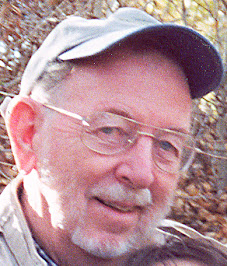Amazingly, I haven’t
become depressed by this information, but rather am enthralled at my new
understanding of the role I can have in the world that we all live in.
The last few weeks of
the semester I’ve been the most consistently and profoundly happy I have ever
been, while simultaneously being barraged with the most depressing possible
information. Thank you – this class changed my life.
Sounds good, eh? Worth looking into? Well, a very condensed
version of the course – it’s called Reality
101 – is available online in the
form of an Earth Day presentation by the teacher, Dr. Nate Hagens, given this
last Earth Day in Rochester, Minnesota: https://www.youtube.com/watch?v=YUSpsT6Oqrg
Highly recommended. Nate is the best Big Picture presenter I
know of. Having achieved an honors Masters degree in finance at the University
of Chicago, he became a successful Wall Street trader. However, finding that
merely making (and spending) money was not making him happy, he left the
Street, spent a few years in travel and independent study, then got a PhD in Natural Resources at the University of Vermont, “where he studied
the relationship between debt and energy on the supply side and the
evolutionary underpinnings of behavioral obstacles to changing our consumption
patterns on the demand side.” He now lives on a small farm in Wisconsin. His
personal website: http://www.themonkeytrap.us/
Looking back at my last slowdown post, in February, I note
having said about “reality:” In general
the way we see and understand any given situation will be conditioned by what
we bring to the situation. Reality is filtered through the lenses of our fears,
hopes and previous life experiences.
So here is a test of your perception of reality (or of one
small piece of it):
Of course, smart people like you, when presented with such a
“test,” will smell a trick being played, so instead of immediately answering
the question, you held up a card or maybe even a ruler to measure and compare
the horizontal and vertical lines, finding that they are exactly the same
length.
Still, I’ll bet that the vertical line still looks longer to you. As it does to me. It looks
really significantly longer. That’s because we are WEIRD.
That’s WEIRD in the sense of our having grown up in a Western,
Educated, Industrialized, Rich and Democratic country. The illusion is a
cultural effect. Studies have shown that the eyes of people from some
non-Western cultures are much less susceptible to the illusion, much more
likely to immediately perceive the reality to be equal line length. See: http://www.apa.org/monitor/2010/05/weird.aspx
So, I don’t know how well Nate’s students would handle the
horizontal-vertical illusion test; but it seems their perception of reality
(“the world that we all live in”) has been radically transformed. Here is one
of Nate’s graphic representations of reality, which when I first looked at it
reminded me of the horizontal-vertical illusion graphic, having pretty much the
same shape.
The graphic is a graph, a timeline representing amounts of
fossil (carbon) energy available to humans over a span of sixteen thousand
years. For various reasons, including the vastness of the time scale, it is
hard to know exactly where we are on that vertical pulse. In his presentation,
Nate has attached two red stars, saying We might be here, We might be
there. I’ve taken those stars away just
to give you a reality-check puzzle. Go see the presentation to see if your
perception of that reality is close to his: https://www.youtube.com/watch?v=YUSpsT6Oqrg. It comes fairly early in the show.
Note: One of the research teams investigating cross-cultural
differences in visual perception had this to say: “We predicted that people in different cultures would be differentially
susceptible to geometric illusions because they have learned different, but
always ecologically valid, visual inference habits.” I predict that if you
go through Nate's entire presentation – it’s too short and too long, go slow to
take it all in – and then go back to the energy timeline graph, your perception
of the reality it depicts will have changed. (Quote from https://pdfs.semanticscholar.org/7f19/97864b14ec48d827fc24c41701be6bca5833.pdf)




